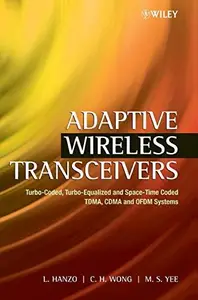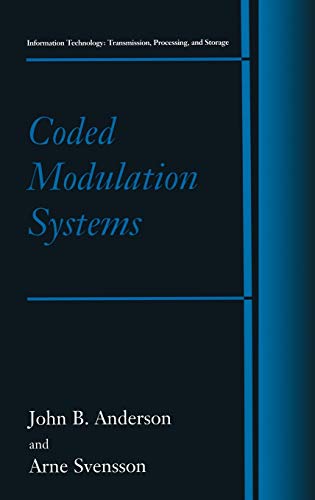
Free Download Adaptive Wireless Transceivers: Turbo-Coded, Turbo-Equalized and Space-Time Coded TDMA, CDMA and OFDM Systems By L. Hanzo, C. H. Wong, M. S. Yee(auth.)
2002 | 734 Pages | ISBN: 0470846895 | PDF | 11 MB
Adaptive Wireless Transceivers provides the reader with a broad overview of near-instantaneously adaptive transceivers in the context of TDMA, CDMA and OFDM systems. The adaptive transceivers examined employ powerful turbo codecs, turbo equalisers and space-time codecs, equipping the reader with a future-proof technological road map. It demonstrates that adaptive transceivers are capable of mitigating the channel quality fluctuations of the wireless channel as a lower-complexity alternative to space-time coding. By contrast, if the higher complexity of multiple transmitters and multiple receiver-assisted systems is deemed acceptable, the advantages of adaptability erode. Provides an in-depth introduction to channel equalisers and Kalman filtering and discusses the associated complexity versus performance trade-offs Introduces wideband near-instantaneously adaptive transceivers and studies their performance both with and without turbo channel coding Describes how to optimise adaptive modulation mode switching and highlights a range of practical considerations Introduces neural network based channel equalisers and discusses Radial Basis Function (RBF) assisted equalisers embedded into adaptive modems supported by turbo channel coding and turbo channel equalisation Employs the above adaptive principles also in the context of CDMA and OFDM transceivers and discusses the pros and cons of space-time coding versus adaptive modulation Researchers, advanced students and practising development engineers working in wireless communications will all find this valuable text an informative read.Content: Chapter 1 Prologue (pages 1-17): Chapter 2 Introduction To Equalizers (pages 19-44): Chapter 3 Adaptive Equalization (pages 45-79): Chapter 4 Adaptive Modulation (pages 81-122): Chapter 5 Turbo-Coded and Turbo-Equalised Wideband Adaptive Modulation (pages 123-190): Chapter 6 Adaptive Modulation Mode Switching Optimization (pages 191-255): B. J. Choi and L. HanzoChapter 7 Practical Considerations of Wideband AQAM (pages 257-296): Chapter 8 Neural Network Based Equalization (pages 297-383): Chapter 9 RBF?Equalized Adaptive Modulation (pages 385-415): Chapter 10 RBF Equalization Using Turbo Codes (pages 417-452): Chapter 11 RBF Turbo Equalization (pages 453-493): Chapter 12 Burst?by?Burst Adaptive Multiuser Detection CDMA (pages 495-534): E. L. Kuan and L. HanzoChapter 13 Adaptive Multicarrier Modulation (pages 535-587): T. Keller and L. HanzoChapter 14 Space?Time Trellis Coding versus Adaptive Modulation (pages 589-637): T. H. Liew and L. HanzoChapter 15 Conclusions and Suggestions for Further Research (pages 639-651):
